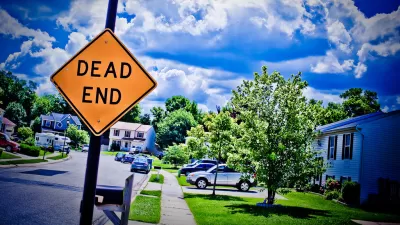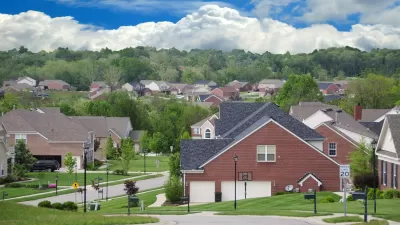Changing Demographics
What Planners Need to Know About Aging for Comprehensive Plans
Julia Wolfe, planning specialist for the Ramsey County Public Health, lays out some suggestions to plan for aging population.

Chicago Deeply Segregated, if Slightly Less So Than in the 1990s
A Chicagoan working at a downtown library noticed her black coworkers all tended to head home to the South Side after work while her white coworkers went north. She asked Chicago's Public Radio station (WBEZ) if the city was becoming more segregated.

Twin Cities Regional Forecast Foresees Steady Growth and Big Changes
The Metropolitan Council has released "The Twin Cities Regional Forecast to 2040: Steady Growth and Big Changes Ahead" to provide a foundation for coordinated planning by the Metropolitan Council and local governments.

Beer from Portlandia in the Land of the Rising Sun
Japanese cities and citizens look to Portland for inspiration.

Dispelling Four Myths of Houston's Growth and Affordability
A researcher at Rice University finds that proclamations of Houston’s affordability, gentrification, and growth are just myths.

Poverty Less Rural Than 50 Years Ago
It used to be that the nation's rural areas suffered from the highest poverty rates. Today, nearly half of the American poor live in mid-sized counties.

The Changing Face of Suburban America
As the nation becomes more racially diverse, so too do the suburbs.

The Changing Shape of American Cities
A newly released report shows the demographic transformation of American cities spatially from 1990 to 2012 by charting their neighborhoods based on distance to the center of the city.
Urban Churches Adapt to a Changing City
In Washington, D.C., residents, shops and restaurants come and go, often moving from neighborhood to neighborhood. But churches remain. They anchor the community as it changes, and often find themselves changing with it.
Growing Concentrations of Poverty in American Suburbs
Updating the initial "Re-Emergence of Concentrated Poverty" Brookings report, Elizabeth Kneebone shows where concentrations of poverty have taken root during the Great Recession and subsequently slow recovery period.
The Policy Implications of Families in Virginia Choosing to Stay in Cities
Data in Virginia shows that more young families are choosing to stay in urban areas to raise their children. This is causing a rapid increase in school enrollment and fueling the fastest growth Virginia's urban areas have experienced since the 1950s.

Families Choosing Twin Cities Urbanity Over Suburban Living
Data suggesting a dramatic shift toward the urban core are accruing in the Twin Cities metropolitan area. Suburbs have responded by creating walkable downtowns, but are struggling with declining school enrollment and other consequences.
Downturn Proves Resiliency of Smart Growth
In an interview with the San Diego Union-Tribune, Geoffrey Anderson and Bill Fulton reflect on the new normal for development across the country, which astonishingly to anyone looking back twenty years, has absorbed Smart Growth principles.
Urban Design for Planners 1: Software Tools
This six-course series explores essential urban design concepts using open source software and equips planners with the tools they need to participate fully in the urban design process.
Planning for Universal Design
Learn the tools for implementing Universal Design in planning regulations.
Smith Gee Studio
Alamo Area Metropolitan Planning Organization
City of Santa Clarita
Institute for Housing and Urban Development Studies (IHS)
City of Grandview
Harvard GSD Executive Education
Toledo-Lucas County Plan Commissions
Salt Lake City
NYU Wagner Graduate School of Public Service


































